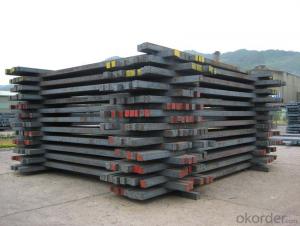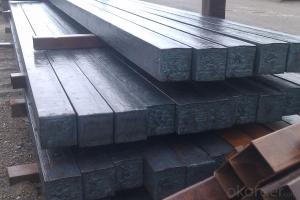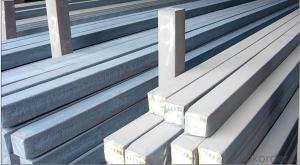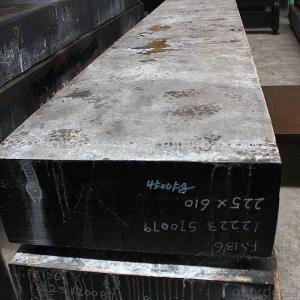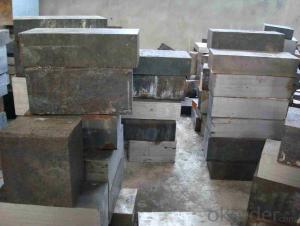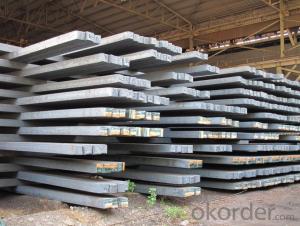Hot Rolled Steel Billet 3SP Standard 140mm
- Loading Port:
- Shanghai
- Payment Terms:
- TT OR LC
- Min Order Qty:
- 100 m.t.
- Supply Capability:
- 10000 m.t./month
OKorder Service Pledge
OKorder Financial Service
You Might Also Like
Structure of Hot Rolled Steel Billet 3SP Standard 140mm

Description of Hot Rolled Steel Billet 3SP Standard 140mm
Prepainted Rolled steel Coil is a kind of coated steel coil/sheet. With the cold rolled steel of different strength and thickness as substrate, it is produced through applying Al-Zn coat on both faces by hot dip process. In its coating, Al accounts for about 55%, Si 1.6%, while the remaining is Zn. Aluminum zinc coils enjoys both the physical protective feature and durability of Al and the electrochemical protective property of Zn. And its surface has bright silver color and regular embossed-like figure, which are highly decorative. RAL Scale Z35 Prepainted Rolled Steel Coil for Construction Roofing

Main Feature of Hot Rolled Steel Billet 3SP Standard 140mm
1.Corrosion resistance: It mainly depends on the zinc protection. When the zinc being worn,
2. Heat resistance: steel sheet has excellent heat resistance, can withstand high temperatures over 300 centigrade, and is similar with aluminized steel high temperature oxidation resistance. It often used in chimney pipes, ovens, fluorescent lighting device and the device cover.
3. Heat reflective: Galvanized steel plate heat-reflective high rate is twice as galvanized steel, often used to make insulation materials. RAL Scale Z35 Prepainted Rolled Steel Coil for Construction Roofing
Applications of Hot Rolled Steel Billet 3SP Standard 140mm
1. Construction and building: roofing; ventilating duct; handrail; partition panel;etc.
2. Electric appliance: refrigerator; washing machine; refrigerator; DVD;etc.
3.Transportation: oil tank; gas tank;road sign; etc.
4.Agriculture constructions :barn; etc.RAL Scale Z35 Prepainted Rolled Steel Coil for Construction Roofing
5.Others:vending machine; game machine; auto parts spare parts etc.
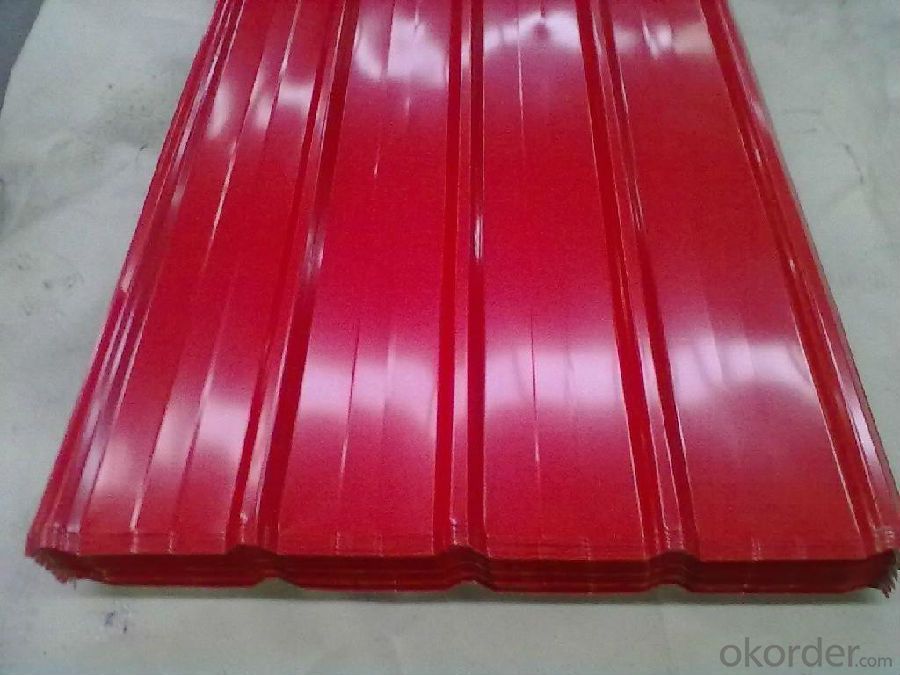
Specifications of Hot Rolled Steel Billet 3SP Standard 140mm
Product | Hot Rolled Steel Billet 3SP Standard 140mm |
Material Grade | SGCC / SGCH / DX51D+AZ, etc |
Thickness | 0.5-3.0mm |
Width | 700-1500mm |
Tolerance | Thickness: +/-0.02mm , Width:+/-2mm |
Zinc-coating | AZ30-150g/m2 |
Technique | Raw material: Hot rolled steel coil --> Cold rolled_>hot dipped galvalume |
Surface | Dried, Chromated, Unoiled,RAL Scale Z35 Prepainted Rolled Steel Coil for Construction Roofing |
Spangle | Regular spangle , small spangle, zero spangle |
ID | 508MM 610MM |
Coil weight | 25MT max |
Export package | Cardboard inner sleeves, Waterproof paper, galvanized steel covered and steel strip packed |
FAQ of Hot Rolled Steel Billet 3SP Standard 140mm
We have organized several common questions for our clients,may help you sincerely:
1. What is the minimum order quantity ?
Our MOQ is 100 mt for each size each specification. Usually we can offer discount if can buy large QTY once. RAL Scale Z35 Prepainted Rolled Steel Coil for Construction Roofing
2. How long can we receive the product after ordering?
Our general delivery time is 30 days after confirmation, but so some special orders, we have offer special delivery time
3. How to guarantee the quality of the products?
We have established the international advanced quality management system ,every link from raw material to final product we have strict quality test;We resolutely put an end to unqualified products flowing into the market. At the same time, we will provide necessary follow-up service assurance.
4. What is the payment?
We accept T/T, L/C
- Q:How are steel billets tested for internal defects?
- Steel billets are tested for internal defects through a variety of non-destructive testing methods. One of the most common methods used is ultrasonic testing (UT). During this process, high-frequency sound waves are transmitted into the billet, and the reflections of these waves are analyzed to detect any internal defects such as cracks, voids, or inclusions. UT can provide accurate and detailed information about the size, location, and nature of the defects. Another method used is magnetic particle inspection (MPI). This technique involves magnetizing the billet and applying iron particles to its surface. If there are any internal defects, the magnetic field will cause these particles to gather around them, making them visible and detectable. Eddy current testing (ECT) is also employed to assess the internal quality of steel billets. It utilizes electromagnetic induction to create eddy currents within the material. Any changes in the electrical conductivity or magnetic permeability caused by internal defects can be detected by analyzing the variations in the induced current. Additionally, radiographic testing (RT) is utilized to inspect the internal structure of steel billets. X-rays or gamma rays are directed towards the billet, and the resulting radiographic image can reveal any internal defects such as voids, cracks, or inclusions. Other methods, such as dye penetrant testing and visual inspection, can also be used to detect superficial and near-surface defects in steel billets. These methods involve applying a liquid or dye to the surface of the billet, which will seep into any cracks or surface irregularities, making them visible under certain lighting conditions. Overall, a combination of these non-destructive testing methods is employed to ensure the quality and integrity of steel billets by effectively detecting any internal defects that could compromise their structural integrity and performance.
- Q:What are the main challenges in the production of steel billets?
- Producing steel billets, which are semi-finished products used in various steel products, presents several challenges. One of the primary obstacles is guaranteeing reliable and high-quality raw materials. Steel billets are typically made from either scrap metal or iron ore, and obtaining a steady supply of these materials is difficult due to availability and cost fluctuations. Another challenge is achieving the desired chemical composition and mechanical properties of the steel billets. The production process involves steps like melting, refining, and casting, each of which must be carefully controlled to achieve the desired outcome. Precise control over temperature, alloying elements, and impurities is crucial to meet the required specifications. The choice of casting method also plays a significant role in steel billet production. There are two methods: continuous casting and ingot casting, each with its own advantages and disadvantages. Continuous casting is more commonly used due to its higher productivity and better control over dimensions and surface quality. However, maintaining a stable and continuous process requires sophisticated equipment and expertise. The cooling and solidification process after casting is another critical challenge. Proper cooling is necessary to prevent defects like cracks, segregations, or uneven microstructures. The cooling rate must be carefully controlled to achieve the desired microstructure and mechanical properties of the billets. Additionally, handling and storing steel billets can be challenging. Billets are often transported and stored in large quantities, so maintaining their quality and preventing damage is crucial. Proper handling equipment, storage conditions, and logistics management are necessary to minimize potential damage or loss. Lastly, environmental considerations are increasingly important in steel billet production. The process generates significant emissions, waste, and energy consumption. Meeting environmental regulations and implementing sustainable practices, such as scrap metal recycling or reducing energy consumption, can be challenging but are crucial for the industry's long-term viability. In summary, the main challenges in steel billet production include ensuring consistent and high-quality raw materials, achieving desired chemical composition and mechanical properties, selecting the appropriate casting method, controlling the cooling and solidification process, handling and storage, and addressing environmental concerns. Overcoming these challenges requires advanced technology, skilled workers, and efficient management practices in the steel production industry.
- Q:How are steel billets preheated before processing?
- Steel billets can be preheated before processing using various methods depending on the specific requirements of the process and the type of equipment available. One common method is the use of natural gas or propane-fired furnaces. The billets are placed inside the furnace, and the temperature is gradually increased to the desired preheating temperature. Another method is the use of induction heating. This involves placing the billets inside a coil, and an alternating current is passed through the coil, which generates a magnetic field. This magnetic field induces electric currents within the billets, resulting in heat generation and preheating of the steel. Additionally, some preheating processes utilize electric resistance heating. In this method, the billets are placed between two electrodes, and an electric current is passed through the electrodes. The resistance to the flow of current generates heat, which preheats the steel billets. Preheating of steel billets is crucial as it helps to reduce the thermal shock experienced during subsequent processing steps. It also improves the overall efficiency of the process, as preheated billets require less energy to reach the desired processing temperature. Moreover, preheating helps to enhance the mechanical properties of the steel, making it easier to shape and manipulate during processing.
- Q:Can steel billets be customized in terms of shape and size?
- Yes, steel billets can be customized in terms of shape and size. Steel billets are semi-finished products that are typically rectangular in shape and are used as raw material for various manufacturing processes. However, they can be altered to meet specific requirements by undergoing a process known as billet rolling or cross-rolling. During this process, the steel billets are passed through a series of specially designed rolls that apply pressure and force to reshape them. This allows for the customization of the billets into different shapes and sizes, such as square, round, or hexagonal, based on the desired end product. Additionally, the size of the steel billets can also be customized. The initial dimensions of the billets can be adjusted by either increasing or decreasing their length, width, and height. This flexibility in customization enables manufacturers to produce steel billets that best suit their specific production needs. In conclusion, steel billets can indeed be customized in terms of both shape and size through the process of billet rolling. This allows manufacturers to adapt the billets to their desired specifications, enabling them to create a wide range of products using steel as a raw material.
- Q:How are steel billets coated or painted?
- Steel billets can be coated or painted through several methods. One common technique is hot-dip galvanizing, where the billets are immersed in a bath of molten zinc. This process forms a protective zinc coating on the surface of the steel, preventing corrosion. Another method is electroplating, which involves the deposition of a thin layer of metal, such as zinc or nickel, onto the billets using an electric current. Additionally, steel billets can be painted using various coating systems, such as powder coating or liquid paint, to provide a decorative finish or additional protection against rust and environmental factors.
- Q:How are steel billets used in the production of construction components?
- Steel billets are an intermediate product used in the production of construction components. They are typically heated and then shaped into various forms such as beams, columns, or rods, which are essential for constructing buildings, bridges, and other structures.
- Q:How do steel billets contribute to the overall cost-effectiveness of a project?
- There are several ways in which steel billets contribute to the cost-effectiveness of a project. To begin with, steel billets serve as the initial material for various steel products, such as beams, bars, and sheets. Manufacturers can produce these products in a cost-effective manner by utilizing steel billets, which are usually less expensive than finished steel products. Furthermore, the use of steel billets allows for the efficient utilization of resources. They can be easily melted down and shaped into different forms and sizes, thereby reducing waste during the production process. This adaptability diminishes the amount of raw material required, resulting in cost savings. In addition, steel billets possess exceptional strength and durability characteristics. By incorporating steel billets into construction projects, engineers can ensure the solidity and longevity of the structures. This helps to decrease maintenance and repair expenses over time, ultimately enhancing the project's cost-effectiveness. Moreover, steel billets are readily available in the market, making them a cost-effective option for projects with tight schedules. Manufacturers can easily procure steel billets from various suppliers, ensuring a consistent supply of material for the project. Lastly, steel billets contribute to cost-effectiveness through their recyclability. Steel is one of the most widely recycled materials globally, and the use of recycled steel billets can significantly reduce production costs. The recycling of steel billets also aids in minimizing the environmental impact of a project, making it a more sustainable and cost-effective choice. All in all, steel billets play a crucial role in enhancing the cost-effectiveness of a project by providing an economical starting material, reducing waste, ensuring durability, facilitating availability, and promoting recycling.
- Q:What are the main differences between carbon steel and alloy steel billets?
- Carbon steel billets are primarily composed of iron and carbon, with trace amounts of other elements. They are relatively inexpensive and have good strength and hardness properties. On the other hand, alloy steel billets are made by adding various alloying elements such as chromium, nickel, and manganese to enhance specific properties like corrosion resistance, heat resistance, and toughness. This makes alloy steel billets more versatile and suitable for a wide range of applications that require specific material properties.
- Q:What are the different surface treatment methods used for steel billets?
- Some of the different surface treatment methods used for steel billets include shot blasting, pickling, and galvanizing. Shot blasting involves propelling steel shots at high speeds to remove any mill scale or surface impurities. Pickling involves immersing the billets in an acid solution to remove any oxide layers and create a clean surface. Galvanizing involves coating the billets with a layer of zinc to provide corrosion resistance. Other methods such as painting, phosphating, and powder coating may also be used for specific applications.
- Q:How do steel billets contribute to the overall safety of a structure?
- A structure's overall safety is greatly influenced by steel billets in several ways. To begin with, steel billets act as the raw material for producing steel bars, beams, columns, and other structural components. These components are widely utilized in construction due to their exceptional strength and durability. By utilizing steel billets as the starting material, the resulting steel products display outstanding load-bearing capacity, thereby bolstering the structural integrity of the building. Furthermore, steel billets undergo a rigorous manufacturing process that encompasses various quality control assessments. These assessments ensure that the billets possess consistent and dependable mechanical properties, such as high tensile strength and impact resistance. Consequently, when these billets are employed in constructing a structure, they contribute to its overall safety by providing a dependable and robust framework capable of withstanding external forces like wind, earthquakes, or heavy loads. Additionally, advanced metallurgical techniques, such as controlled cooling or heat treatment, are frequently employed to produce steel billets with specific properties required for structural applications. These processes aid in enhancing the steel's microstructure, reducing internal defects, and improving its resistance to corrosion, fatigue, and other forms of degradation. In turn, this prolongs the structure's lifespan and minimizes the risk of structural failure, ensuring the safety of its occupants. Moreover, steel billets can be manufactured with precise dimensions and tolerances, permitting accurate and efficient construction. This precision in fabrication ensures that structural components fit together seamlessly, reducing the likelihood of gaps, misalignments, or weak points that could compromise the structure's safety. Lastly, steel billets are highly recyclable, making them an environmentally friendly choice for construction. By opting for steel billets, the construction industry can diminish its carbon footprint and contribute to sustainable development. This focus on sustainability aligns with the structure's overall safety, as a sustainable approach guarantees the long-term stability and resilience of the built environment. In conclusion, steel billets enhance the overall safety of a structure by providing construction materials that are strong, durable, and reliable. Their consistent mechanical properties, resistance to external forces, improved microstructure, and precise fabrication ensure a sturdy and secure framework. Additionally, their recyclability promotes sustainability, further enhancing the structure's long-term safety and integrity.
1. Manufacturer Overview |
|
|---|---|
| Location | |
| Year Established | |
| Annual Output Value | |
| Main Markets | |
| Company Certifications | |
2. Manufacturer Certificates |
|
|---|---|
| a) Certification Name | |
| Range | |
| Reference | |
| Validity Period | |
3. Manufacturer Capability |
|
|---|---|
| a)Trade Capacity | |
| Nearest Port | |
| Export Percentage | |
| No.of Employees in Trade Department | |
| Language Spoken: | |
| b)Factory Information | |
| Factory Size: | |
| No. of Production Lines | |
| Contract Manufacturing | |
| Product Price Range | |
Send your message to us
Hot Rolled Steel Billet 3SP Standard 140mm
- Loading Port:
- Shanghai
- Payment Terms:
- TT OR LC
- Min Order Qty:
- 100 m.t.
- Supply Capability:
- 10000 m.t./month
OKorder Service Pledge
OKorder Financial Service
Similar products
New products
Hot products
Related keywords
